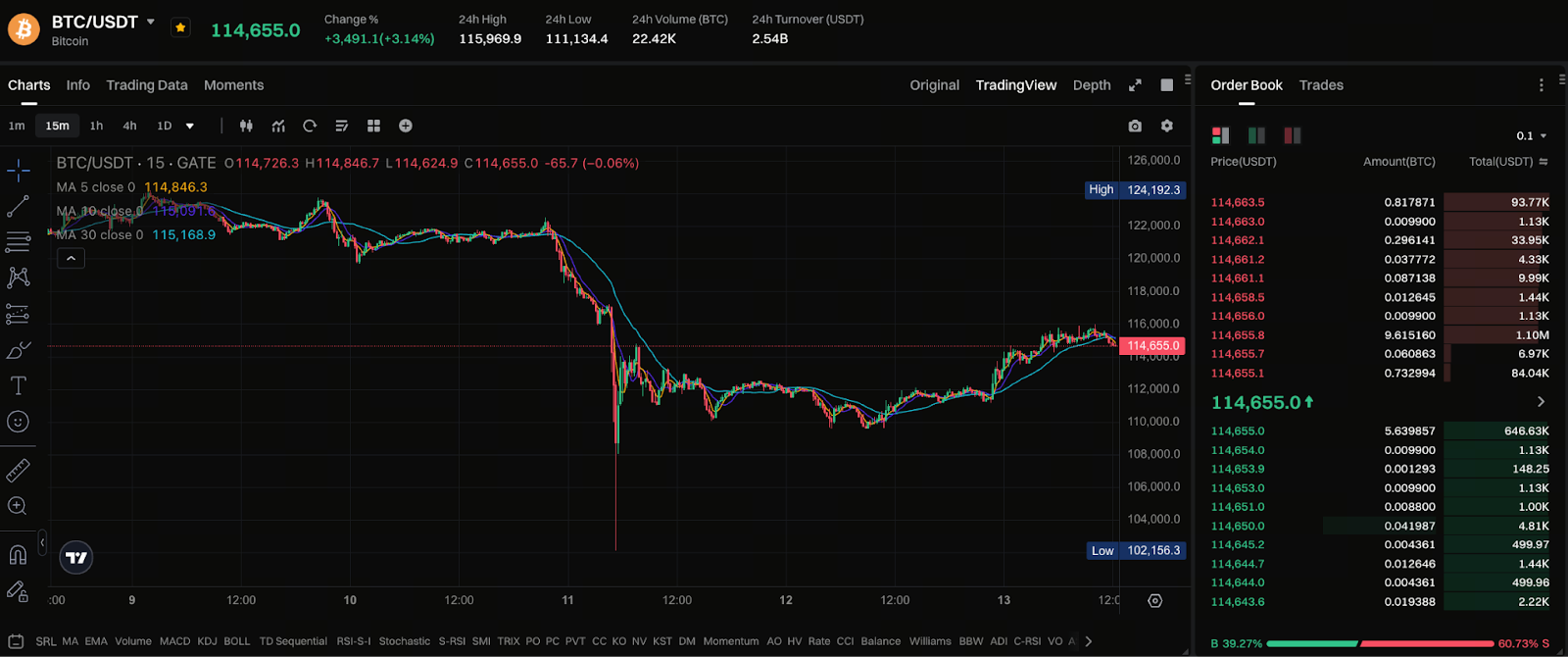BTC Price Prediction: After the Plunge — Can the Bull Market Hold $122K?
Current Market Overview

Chart: https://www.gate.com/trade/BTC_USDT
Panic-driven selloffs occurred in the market following sudden macroeconomic or regulatory headlines. Bitcoin rapidly dropped from its highs, triggering widespread leveraged liquidations. The price briefly fell below $110,000 and neared $102,000. Liquidity improved and buying activity returned, causing the price to rebound, but volatility spiked sharply. This “flash crash–rebound” scenario highlighted the risks of high leverage and thin liquidity, making it more challenging to maintain the $122,000 level.
Why Did the Crash Happen? Key Triggers
- Sudden macroeconomic/regulatory news: Abrupt news shifts can spark irrational chain reactions throughout the market.
- High leverage and thin liquidity: Mass liquidations of leveraged positions amplify selling pressure, pushing prices far outside their normal range in a short span.
- Intensified market sentiment: As panic sets in, liquidity providers withdraw, spreads widen, and the selloff accelerates.
The combination of these factors drove the sharp decline in a very short timeframe.
Technical Outlook
Post-crash, the market has entered a consolidation and recovery period. The critical test is whether robust support can form in the $110,000–$115,000 zone. Progressively filling the liquidity gaps left by liquidations will also be essential. If this area holds and trading volume picks up, Bitcoin could retest $122,000 or higher. However, if selling pressure persists and the US dollar or other safe-haven assets strengthen, sustaining levels above $122,000 will be challenging.
Capital and Sentiment Highlights
- Institutions may seek short-term bargain opportunities, but amid heightened uncertainty, many prefer to wait and avoid being trapped by further volatility.
- The pace at which market makers and liquidity providers return will determine the resilience of price recovery.
- Clearing speculative short-term positions gives the market a chance to normalize. However, this process requires time and clear positive signals.
Advice for Newcomers (Strict Position Management)
- If you’re holding positions currently at a loss, avoid chasing rallies or panic selling. First, evaluate your own stop-loss and risk tolerance.
- If planning incremental entries, consider small, incremental buys at key support levels (such as $110,000–$115,000), and set strict overall position limits.
- If clear short-term positive developments, such as regulatory clarity or large-scale capital inflows, emerge, it may be appropriate to gradually increase exposure.
- Always put risk management first—never allocate all your capital in a single rebound.
Summary
This crash exposed structural vulnerabilities in the market but also cleared excessive leverage. The ability to hold $122,000 now hinges on macroeconomic, regulatory, and capital flows, not just technicals. During periods of heightened volatility, conservative and incremental entry strategies remain the most prudent approach for newcomers.
Related Articles

2025 BTC Price Prediction: BTC Trend Forecast Based on Technical and Macroeconomic Data

Pi Coin Transaction Guide: How to Transfer to Gate.com

Flare Crypto Explained: What Is Flare Network and Why It Matters in 2025

How to Use a Crypto Whale Tracker: Top Tool Recommendation for 2025 to Follow Whale Moves

What is N2: An AI-Driven Layer 2 Solution
